L Guardabassi
High prevalence of USA300 among clinical isolates of methicillin-resistant Staphylococcus aureus on St. Kitts and Nevis, West Indies
Guardabassi, L; Moodley, A; Williams, A; Stegger, M; Damborg, P; Halliday-Simmonds, I; Butaye, P R
Authors
A Moodley
A Williams
M Stegger
P Damborg
I Halliday-Simmonds
P R Butaye
Abstract
Limited information is available on antimicrobial susceptibility and clonal distribution of Staphylococcus aureus in the Caribbean region. The aims of this study were to determine the prevalence of antimicrobial resistance among S. aureus isolates and to reveal the frequency and population structure of methicillin-resistant S. aureus (MRSA) in St. Kitts and Nevis, a small island country in the West Indies. A total of 152 S. aureus isolates were collected from consecutive samples submitted to the clinical microbiology laboratory of the main referral hospital from March 2017 to January 2018. Samples came from all units in the hospital and a small number came from external submissions, and comprised a total of 119 clinical specimens and 33 nasal swabs collected from staff and patients. All S. aureus isolates were confirmed by matrix-assisted laser desorption/ionization time-of-flight mass spectrometry. Minimal Inhibitory Concentrations (MICs) of clinically relevant antimicrobials were determined by broth microdilution, and diversity of MRSA isolates was assessed by whole genome sequencing (WGS) analysis. MRSA accounted for 45% (69/152) of the isolates. The highest rates of resistance to non-β-lactam agents were observed for erythromycin (55%), moxifloxacin (41%), and levofloxacin (40%), whereas resistance to the other drugs tested was ≤6%. All isolates were susceptible to ceftaroline, linezolid, teicoplanin, telavancin, and vancomycin. WGS-based multilocus sequence typing (MLST) showed that approximately 88% of the MRSA isolates belonged to ST8. Phylogenetic analysis on 801 single-nucleotide polymorphisms (SNPs) identified among the MRSA ST8 isolates indicates a large degree of genetic diversity. However, all ST8 strains clustered within the distinct clade that defines the USA300 North American Epidemic lineage (Panton-Valentine Leukocidin (PVL) +, arginine catabolic mobile element (ACME) +, Staphylococcal cassettes chromosome mec IVa (SCCmec IVa)). Our data show high levels of methicillin, macrolide, and fluoroquinolone resistance among S. aureus on St. Kitts and Nevis. The USA300 North American epidemic lineage is responsible for the vast majority of MRSA infections on this Caribbean island.
Citation
Guardabassi, L., Moodley, A., Williams, A., Stegger, M., Damborg, P., Halliday-Simmonds, I., & Butaye, P. R. (in press). High prevalence of USA300 among clinical isolates of methicillin-resistant Staphylococcus aureus on St. Kitts and Nevis, West Indies. Frontiers in Microbiology, 10, 1123. https://doi.org/10.3389/fmicb.2019.01123
| Journal Article Type | Article |
|---|---|
| Acceptance Date | May 3, 2019 |
| Deposit Date | Jun 6, 2019 |
| Publicly Available Date | Jun 6, 2019 |
| Journal | Frontiers in Microbiology |
| Electronic ISSN | 1664-302X |
| Publisher | Frontiers Media |
| Peer Reviewed | Peer Reviewed |
| Volume | 10 |
| Pages | 1123 |
| DOI | https://doi.org/10.3389/fmicb.2019.01123 |
| Public URL | https://rvc-repository.worktribe.com/output/1382489 |
Files
12137.pdf
(1 Mb)
PDF
Downloadable Citations
About RVC Repository
Administrator e-mail: publicationsrepos@rvc.ac.uk
This application uses the following open-source libraries:
SheetJS Community Edition
Apache License Version 2.0 (http://www.apache.org/licenses/)
PDF.js
Apache License Version 2.0 (http://www.apache.org/licenses/)
Font Awesome
SIL OFL 1.1 (http://scripts.sil.org/OFL)
MIT License (http://opensource.org/licenses/mit-license.html)
CC BY 3.0 ( http://creativecommons.org/licenses/by/3.0/)
Powered by Worktribe © 2025
Advanced Search
